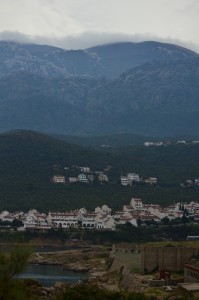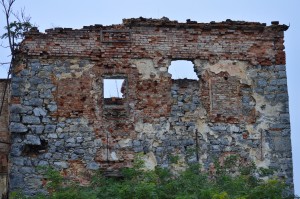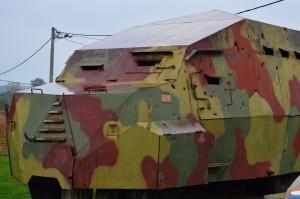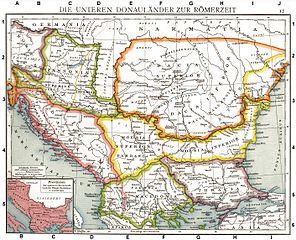Now that I’ve just released the last installment of Titus Pullus’ story, Marching With Caesar®-Final Campaign, I can talk about what turned out to be a very difficult process that I know other authors have gone through, saying goodbye to a beloved character.
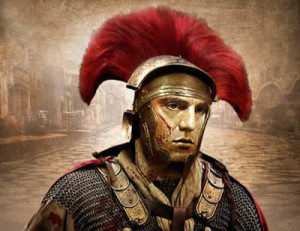 In my case, whenever I would read accounts by other authors about how difficult it proved to write the words that created the final scenes of a character with whom they had become attached, I would give a dismissive snort.
In my case, whenever I would read accounts by other authors about how difficult it proved to write the words that created the final scenes of a character with whom they had become attached, I would give a dismissive snort.
“There’s no way that would happen to me; I know they’re figments of my imagination that I created. I brought ’em to life, I can take ’em out just as easily.”
All I can say in my defense is that I honestly believed that at the time. And I told myself that the only reason I hadn’t actually finished Titus’ story, back in early 2012, was because I had decided to go ahead and self-publish what is now Marching With Caesar®-Conquest of Gaul. And since I had actually written Titus’ story all the way to the walls of Siscia, on the campaign led my Marcus Primus, I knew I had quite a bit of time before I had to finish it.
I continued to tell myself that, all the way through 2012 and into 2013. Once I realized that what I had originally planned as just the third volume would become the third and the fourth, it gave me the perfect excuse to put it off even longer. Marching With Caesar®-Antony and Cleopatra: Part I-Antony and Marching With Caesar®-Antony and Cleopatra: Part II-Cleopatra came out before I finally decided that it was time to finish Titus’ story.
And a funny thing happened; at first, there wasn’t any problem, the words flowing from my mind to my fingers as quickly and easily as they always have. Now that I’ve become a semi-successful author, one of the aspects of life that come with that is one that I still am struggling with, and that’s the fact that there are people who are actually interested in my “writing process”. While I find it flattering that people are interested, I find it very difficult to explain and on those rare occasions when I do talk about it, usually to other aspiring authors, all I can say is, “I have no idea how it happens.” Most of the “writing” occurs in my head, before I ever sit down, so that when I do grab my laptop it’s more a matter of taking dictation than creation. The hardest part is in having my fingers keep up with the words flowing from my brain, and that was the case as I began the final part of Titus’ story.
But then I began slowing down, and it seemed my fingers and brain had entered into some sort of conspiracy against their owner. I knew what I wanted to write; I could see the words strung together just like always, but I would find myself, computer in my lap, staring off into space. I had begun thinking, not about Titus’ story, but all that Titus had meant to my life.
When I started Titus’ story I was still gainfully employed; now, I am once more gainfully employed, but the difference in my circumstances is so vastly different it’s hard for me to fathom. I hated not just my job, but my life in general, because I had, stealing a phrase from back in the day “clawed my way to middle management”, where I was a VP of a small software company. To an outside observer, I had absolutely nothing to complain about; a six-figure income and lifestyle to match it, something that I was, and am acutely aware many people would kill to have. But what they didn’t see was the cost associated with that job; the 70 hour weeks, the fact that I literally slept with my Blackberry under my pillow because as is so common in the software industry, a lot of our development process was farmed out to India, which meant that I had several midnight (and later) conference calls a week. Even so, to me personally that wasn’t the highest price this “dream job” charged me, since I’ve always been something of a workaholic. No, it was the frustration that came from watching the leadership of this company make one bad decision after another, putting this company on a flight path that only had one ending, the crash and burn that was so common in the closing years of the first decade of this century for so many companies of all sizes.
So when the inevitable did happen, and my boss interrupted my post-Christmas celebration by flying down from New York, first class of course, just for the express purpose to let me know that in their last-ditch attempt to stave off the inevitable and buy themselves more time, while he looked for a miracle, that I was expendable, I was not happy. However, it wasn’t about losing my job, it was the fact that he had insisted that I cancel my plans for a last lunch with my daughter and son-in-law before they returned to their home in London, just so he could fire me.
And while I didn’t know it at the time, Titus would save me from a repeat performance of a scene like that at some point in my future. Because of Titus, I have embarked on a fourth career, and have experienced a kind of success that, again, the vast majority of people who have chosen this path of the indie author would love to have. I will never again be subject to the whims of an armchair expert whose ability to schmooze and the fact that he read a book on how to run a software company put him in charge of not just my future, but all the other unfortunates chained to that particular company. That’s a kind of freedom for which there is no price tag.
That’s one reason I couldn’t seem to finish Titus’ story, why he lingered in this kind of space of indecision and reluctance, because I realized that no ending I crafted could ever do justice to him or express the gratitude I feel towards him. What Titus represents for me is so powerful and so meaningful that I would love to suspend all sense of reality and make him immortal, but I have resisted that urge. And contrary to my public statements about my reasons for doing so, the reason I now have a full-color recreation of Titus on my chest (which was extraordinarily painful I must say), taken from Marina Shipova’s stunning rendition that served as the first cover is because no matter what I do after this, no matter how many characters I create, Titus Pullus will always be the one who gave me my freedom to put in 70 hours a week at my job…and love every minute of it. And making even more than I did the last time I put in those kinds of hours ain’t bad either.
My hope is that the ending I finally did craft for Titus does justice to his character while staying faithful to what became a very important underlying theme, one from my own experiences, about the cost of ambition. Titus Pullus deserves no less from me.
